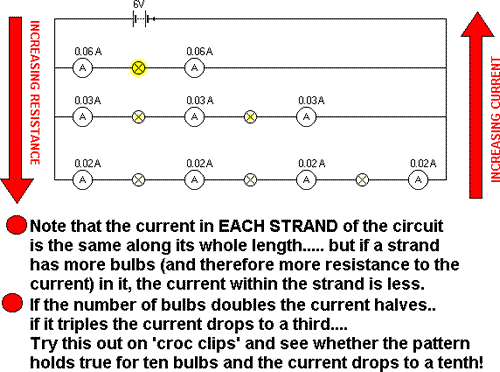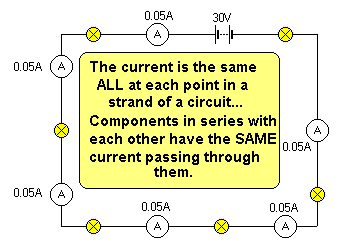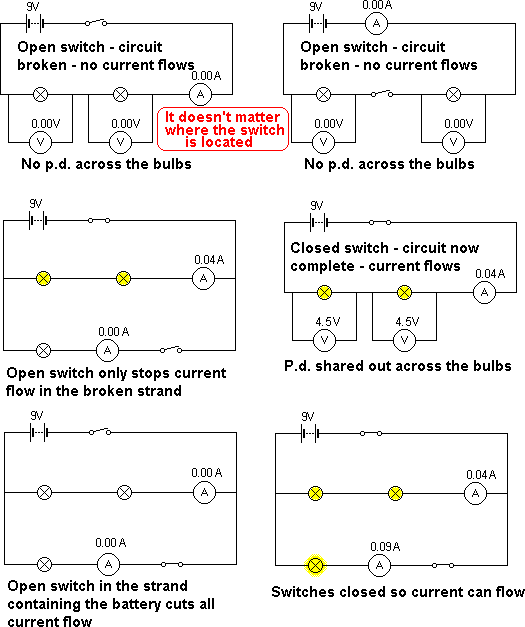    |
||||

Current (I ) |
||||
|
(Please do NOT call it 'ampage' - use the term 'current')
Unit of currentCurrent ( I ) is measured in amperes or amps after Monsieur Ampère.
Measuring current
Symbol: Definition:Current is the rate at which charge is moving past a point in a circuit.
Equation:

This means that if you find out the quantity of charge (Q) that travels past a point in a second (time - t) and divide Q by t you get the current - an amp is a coulomb per second. When finding out how much charge flows you have to add all of the charge carried by particles (such as electrons or ions) that goes in one direction and take away the charge that goes in the other direction. Charge (Q) is measured in coulomb (C) after Monsieur Coulomb. In electrical circuits the 'charge' that moves in a wire is made up of electrons. They are made to drift down a potential gradient (a sort of 'electrical slope' that they slide down) when a battery or power source is connected in a complete circuit. See potential difference. If you are dealing with a solution then the charge is made up of ions and you have to take into account the charge number on each ion and the direction it travels when working out a current. Each electron carries a very small charge (1.6 x 10-19C = 0.000 000 000 000 000 000 16C). When a current of 1A flows in a wire over 6 million, million, million electrons are moving past each point on the wire every second!... A current of 1A is a quite a big current. Most domestic electrical appliances use much smaller currents... measured in milliamps or microamps. Why does current flow?Current flows when there is an electric potential gradient (an 'electric slope') between two points on a conductor. The charged particles (sometimes called 'charges') within the conductor move down the gradient - they 'slide down the slope'. The 'steeper the slope' the faster the charges move and the bigger the current that flows (see potential difference) The more charges within the 'sloped' conductor the more charges move in a given time, so the faster the rate of flow of those charges and the bigger the current.
The bigger the potential difference the bigger the current, the bigger the resistance to current, the smaller the current. 
For a current to flow there must be a complete circuitIf there is a break in a strand of a circuit no current can flow because there isn't a potential differece across the components in that strand. An open switch in any strand will stop current flowing through it and therefore mean that all of the components in that strand have no current flowing through them.
The position of the switch does not matter. If it is open the WHOLE strand has no current flowing through it.
Then try these questions on paper: click here For information on short circuits click here |
||||
 |
||||





 Try placing a switch in a
few different places in circuits modelled in software such as Crocodile Physics - ask, you probably have it (or something similar) on your school system.
Try placing a switch in a
few different places in circuits modelled in software such as Crocodile Physics - ask, you probably have it (or something similar) on your school system.

